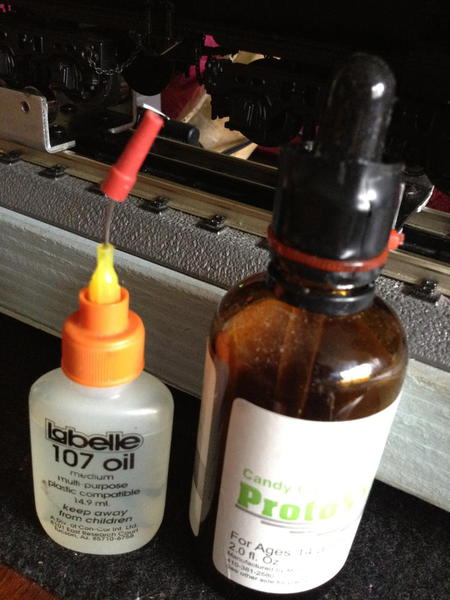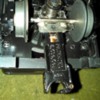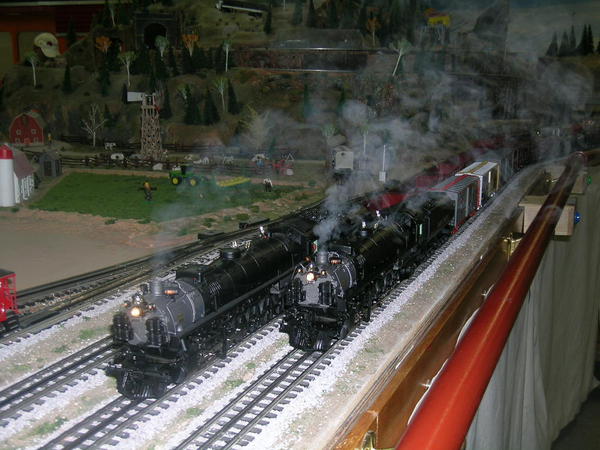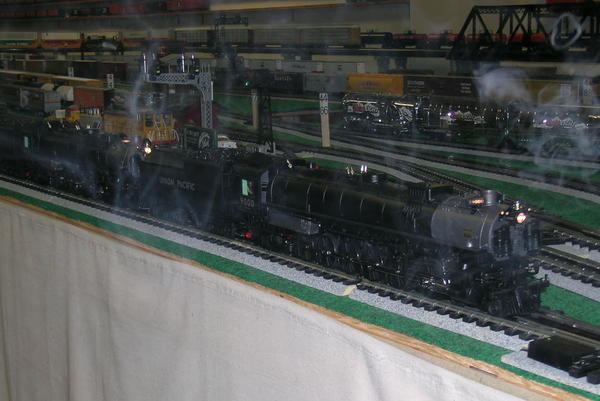Hello folks, Another "storage" problem? I purchased this nice new "old stock" MTH Premier UP 9000 4-12-2 PS2 about TWO years ago!!! IS this crazy or what? I remember testing it when I received it, it was said to be NIB and it showed 1.2 Scale miles on it, BUT the smoke unit was not working. I was about to move then, so I packed it away...Fast forward over two years and it is out of storage and on the test bench...It barely ran, it was jerky and the smoke did not work and then the loco completely died...I thought, oh crapolla, the Sub $600 I paid for it will cost me a few $$ to get the boards fixed..
Took it apart and found out a loose power green wire, smoke motor frozen up, else everything else looked great....
I went through it and cleaned it up, applied 9V to the smoke motor, both direction, it kicked and moaned and complained but then it ran great and quiet in both direction.
Added some tie wraps, black electrical tape, adjusted the heat element (they were touching each other) and re-assembled.
MTH UP9000 has a fully functional Third Piston that really ads to the beauty/uglyness of this loco, in my eyes...
Enjoy!
Third rod and its crank shaft
Nice long wires allow separation easily
Smoke unit, well built but I prefer Lionel's on board connector instead of flying wires like the MTH unit here
I prefer MTH two heating elements and the rope wick over Lionel's design, MTH unit looks to be very long lasting
I tweaked the firebox glow bulb more towards the red plastic window to give a stronger, well, Ahem....glow ![]() . Note the green tie wrap
. Note the green tie wrap
Added some tape to the smoke motor to protect from shorting to the boiler
Spaghetti city. Note the thick blue power wire.
This is what caused the jerky and halt movement of the loco, loose connection
I used the legs of "add on details" to hold some wires down. More Environmentally friendly green tie wraps ![]()
The 3RD rod
Possible shorting of these hanging in the air wires, added pieces of electrical tape, not sown.
Drive shaft barely missed one screw by a mere 1-2 mm MAX!
On the test track. Note, Large Pittman motor . Looks just like the Lionel VL BB motor, is it maintenance free as Lionel claims theirs to be but MTH does not advertise it???
Added tape to the rear coupler to prevent shorts
Inside the Tender, actually not bad, clean install. Good speaker enclosure, high quality speaker, not shown. Sounds are great. The three cylinder sounds are very unique!
MTH smokes effortlessly!!!
Here we go!
Home adapted smoke bottle from an empty oil one...
The UP 9000 still runs rough now, I think the long side rods are too tight. I ran it for about an hour on test rollers and it loosened up some. Now it runs some what smoothly at 5 SMPH, needs more run time but I did not want to put more time on it now, later when my track is running.
Nice MTH engine and the price was right now that it is fixed, I was very lucky not to have needed any new electronics. Wish it had steam chest or whistle effects ![]()
Next, SF 4-8-4....smoke unit....Again ![]()


























